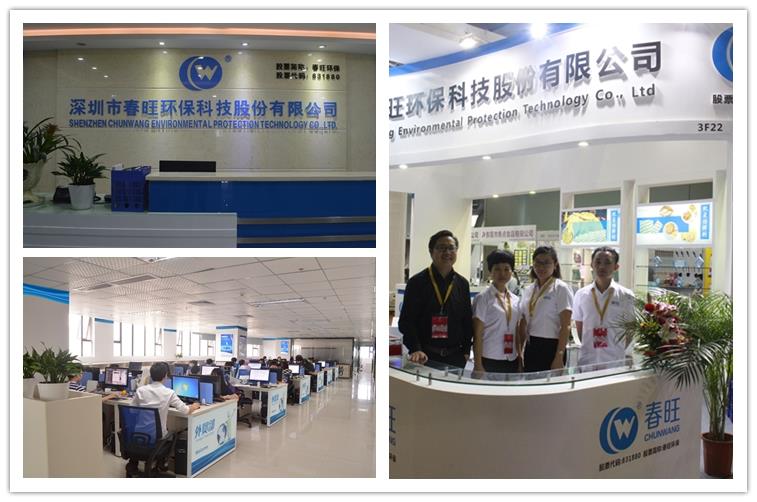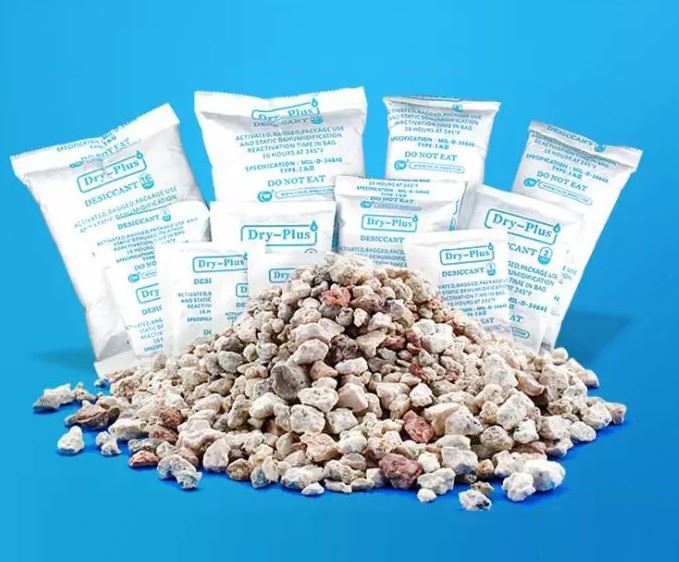Clay Desiccant
18years Famous Desiccant Brand
We are a professional clay desiccant manufacturer with 18 years of professional industry knowledge and a modern industrial plant of 15,000 square meters.
Qualification Certificate
We had passed the ISO9001:2015, ISO14001:2015, BSCI, GMP and Walmart audits. Our products comply with RoHS certification and other certificates.
Safe Materials
The desiccant raw materials have been optimized, do not contain DMF, and comply with RoHS and Reach standards.
Excellent Services
Our sufficient production capacity ensures delivery dates, and complete supervision system ensures product quality. Work with a professional shipping team to ensure safe delivery.
-
![Clay Desiccant Packs]()
Clay Desiccant Packs
-
![Natural Activated Clay Moisture Absorbent]()
Natural Activated Clay Moisture Absorbent
-
![Anti Rust VCI Desiccant]()
Anti Rust VCI Desiccant
-
![Desiccant For Electronics]()
Desiccant For Electronics
-
![Desiccant For Windows]()
Desiccant For Windows
-
![MIL-D-3464E Desiccant Unit Pack]()
MIL-D-3464E Desiccant Unit Pack
-
![Clay Moisture Absorbent In Non-woven Fabric]()
Clay Moisture Absorbent In Non-woven Fabric
-
![Semiconductor Humidity Control Agent]()
Semiconductor Humidity Control Agent
-
![2gram Activated Clay Desiccant Bag For Box Used]()
2gram Activated Clay Desiccant Bag For Box Used
-
![10gram Activated Clay Desiccant Dry Bag]()
10gram Activated Clay Desiccant Dry Bag
-
![Natural Mineral Activated Clay Desiccant 1g]()
Natural Mineral Activated Clay Desiccant 1g
-
![1 Unit Bentonite Mineral Desiccant In Non-woven Fabric]()
1 Unit Bentonite Mineral Desiccant In Non-woven Fabric
What is Clay Desiccant?
Is a natural desiccant. It is widely used to protect products in industry. It is mined in a mine and then ground into a granular form. The seeds are then dried in an oven to remove all traces of moisture. Therefore, the product has been disposed of. Pre-packed in many desiccant packets with various weights.
Chunwang Clay Desiccant meets BS7529:1991 standards of dryness and adsorption capacity.
Features of Clay Desiccant
●Environment Friendly: It is safe, odorless, non-toxic, non-corrosive and easily regenerated.
●Degradative: Since it is made from natural clay minerals it is 100% degradative.
●Adsorption Capacity: The adsorption rate is 50% higher than that of silica gel.
●Cost: It is quite cheaper than silica gel yet very effective.
●Duration: Protects products for much longer durations than silica gel.
●Gases: Its molecular structure helps it to adsorb harmful & poisonous gases like formaldehyde, sulphide, etc.
The Advantages of Using Clay Desiccant
Cost-effective
Clay desiccant packets are a cost-effective solution for moisture and humidity control. They are relatively less expensive than other desiccants, such as silica gel or molecular sieve. This makes them an ideal choice for businesses on a budget, who want to protect their products from moisture damage.
01
Natural and Eco-friendly
Clay is a natural material that is extracted from the earth. It does not contain any harmful chemicals or toxins, making it a safe option for use in various industries. Unlike other desiccants that are made of synthetic materials, clay is biodegradable and can be safely disposed of without causing harm to the environment.
02
High Adsorption Capacity
Clay desiccant packets have a high adsorption capacity, which means they can effectively absorb moisture and humidity from the surrounding environment. The packets work by attracting water molecules to their surface, where they are trapped and held. This capacity makes them highly suitable for use in packaging, storage, and shipping applications, where protection against moisture is crucial.
03
Safe for Food and Pharmaceuticals
In the food and pharmaceutical industries, it is vital to ensure that the products are not contaminated by any harmful substances. Clay desiccant packets are non-corrosive and non-toxic, making them an ideal choice for these sensitive applications. In addition, they can help extend the shelf life of perishable goods, ensuring they remain fresh and safe for consumption.
04
Easy to Use
Clay desiccant packets are easy to use and require no special handling or preparation. Simply place them in the desired location, and they will begin absorbing moisture immediately. They can be used in various settings, including industrial, commercial, and residential applications. You do not need any additional equipment or expertise to use them, making them a convenient option for moisture control.
05
Comparison of Clay Desiccants with Other
| Desiccant Type | Absorption Rate | Duration of Effectiveness |
| Clay Desiccant | 40-60% | Long |
| Calcium Chloride Desiccant | 200-300% | Long |
| Silica Gel | 30-40% | Short |
| Molecular Sieve | 20-30% | Medium |
Applications
-
Electronics and technology
-
Feeding
-
Building
-
Automotive
-
Electric equipment
-
Medical devices
-
Pharmacy
-
Chemistry
-
School supplies
-
Refrigeration
-
Industry in general
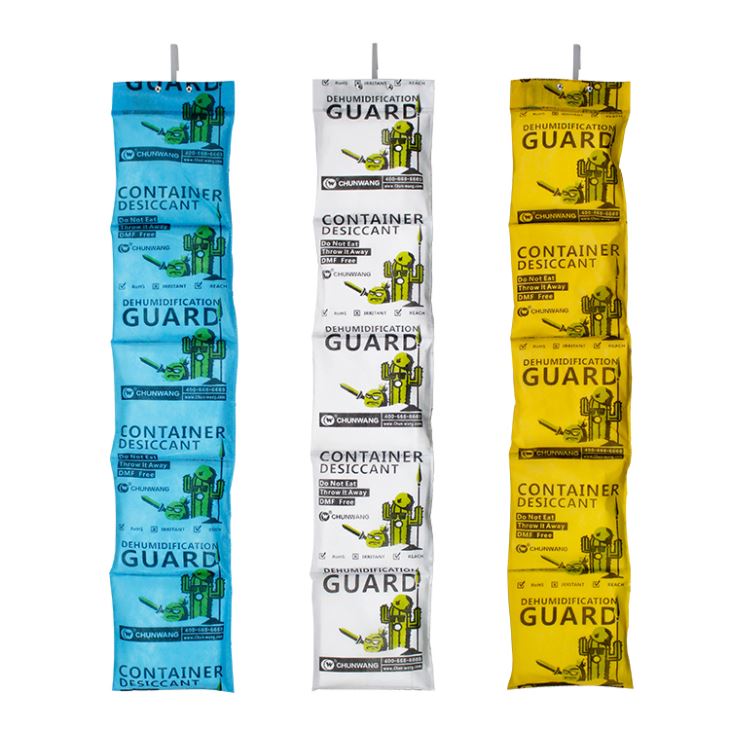
How to Dry Clay Desiccant Packs
►Check desiccant packs weekly to see if they need recharged.
►When rigid or an increase in weight is noted (over 30%), regenerate in the oven.
●Important: Do not use a microwave oven.
●250 degrees Fahrenheit for 6 hours removes roughly 80% moisture.
●250 degrees Fahrenheit for 8 hours removes most moisture.
●250 degrees Fahrenheit for 12 hours removes most moisture from very heavy/stiff packs.
►Let packs cool before handling.
►Place your desiccant packs into service or store in a sealable poly-bag.
Certificate
We had passed the ISO9001:2015, ISO14001:2015, BSCI, GMP and Walmart audits. Our products comply with RoHS certification and other certificates.
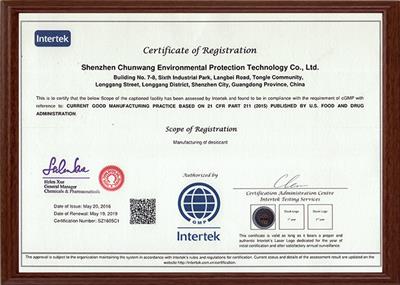
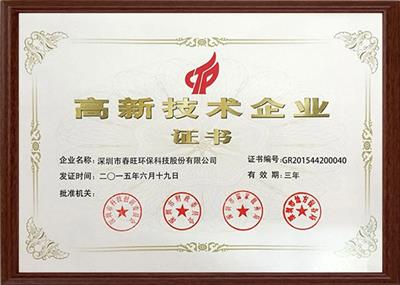
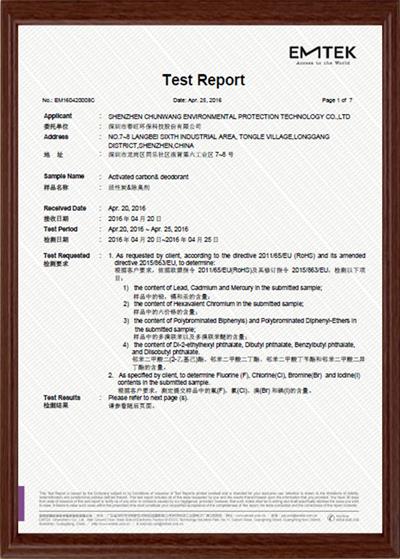
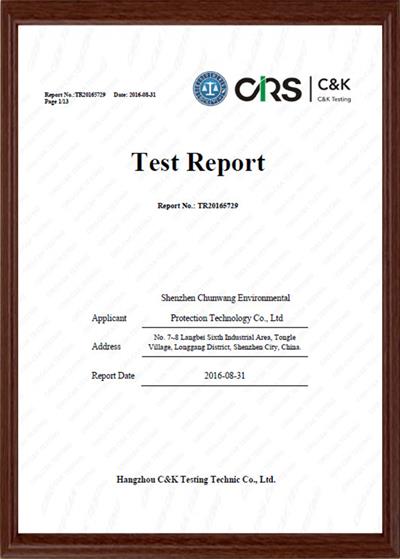
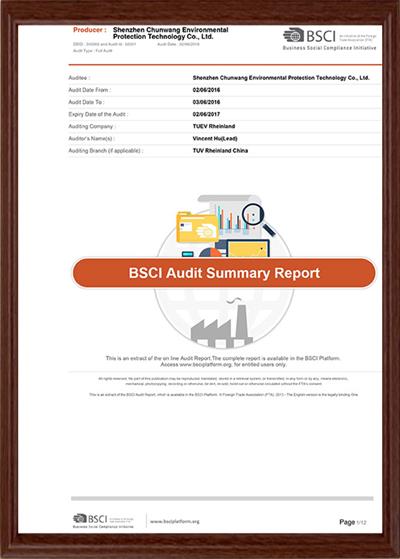
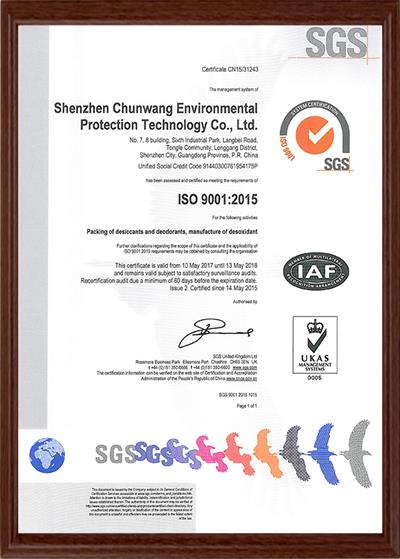
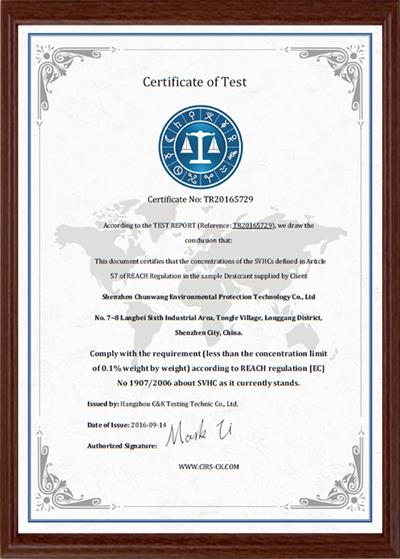
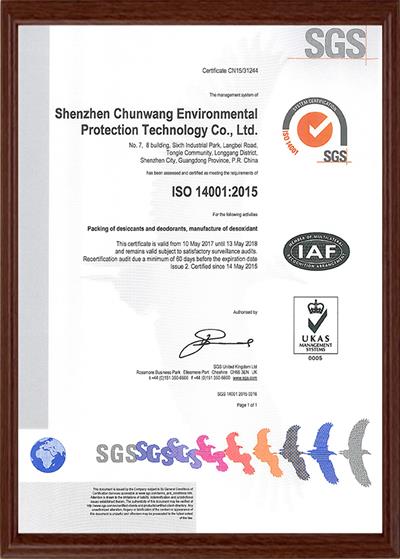
Common Problems
As one of the leading clay desiccant manufacturers and suppliers in China, we warmly welcome you to wholesale quality clay desiccant at competitive price from our factory.


